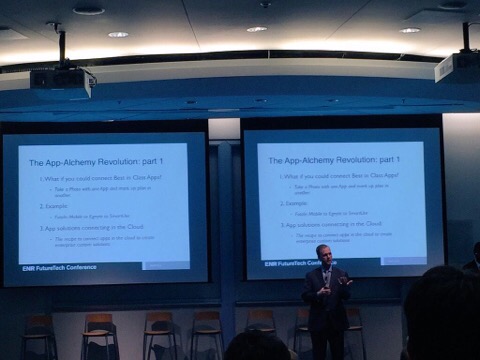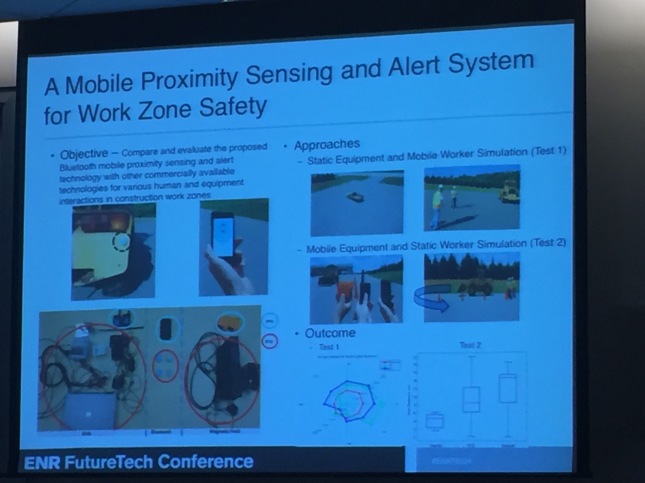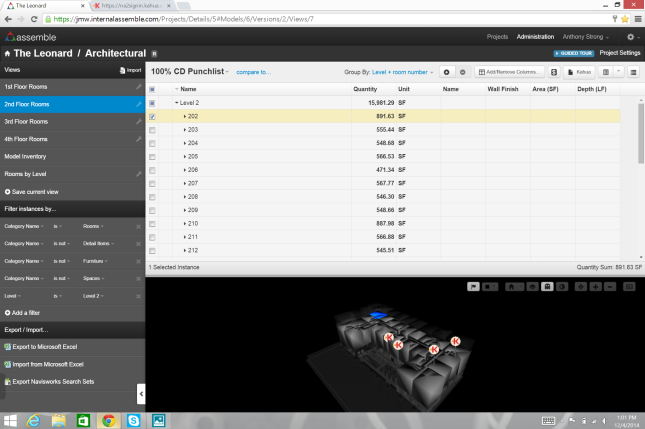Last week I had the honor to present my App-Alchemy recipes at the ENR Future Tech Event on December 11th, 2015 in Atlanta Georgia. The highly technology focused event had several great presentations about the uses for the BIM platform on construction projects. A few items that stood out for me were:
Conference Highlights:
1. Presentations by Georgia Tech Graduate students on
A. The use cases for wearable tech as PPE. What if an employee wearing a safety vest could know a vehicle was approaching them on a blind side? One project is to create a mobile proximity sensing and alert system for work zone safety. The other project is to create a automated safety code checking and hazard detection/prevention system for use with BIM models.
B. BIM component families that are linked with manufacturers for example brick that has the material characteristics. It will allow BIM modelers to use the actual specified product and enhance the final renderings for presentations.
2. There was a presentation about the Grasshopper and Platypus platforms for live BIM coordination among designers. It allows all users to make changes in real time during the design meeting. These changes are then incorporated into the model.
3. Extreme integration session by Jennifer Suerth (Integrated Construction Coordinator) with Mortenson Construction.
– Leveraging new and cutting edge technology processes on the project.
– The use cases for BIM360 and Trimble on University Chicago project.
– Attempting to drive deep engagement with trades and fabricators to maximize value and while-team performance
App-Alchemy Recipe #1
Earlier this summer at the AGC IT Forum Conference I announced a new partnership between Egnyte, FotoIn Mobile and SmartUse to create new integrated app solutions for construction clients. The ConAppGuru called this partnership between apps in the cloud “App-Alchemy”. The beta test I conducted allowed me to take a site progress photo with the FotoIn Mobile App, back it up to Egnyte, and then use it to mark up a plan in the SmartUse App.
App-Alchemy Recipe #2
Over the past few months I have been field testing the punch list integration between Assemble Systems and Kahua. This concept for completing a punch list through a BIM model hosted in the cloud was announced this past summer at the AGC IT Forum Conference. This collaboration would take my concept for App Alchemy to a new level by connecting two platform through open API.
You can view my presentation from the ENR FutureTech Conference click on the link below.






